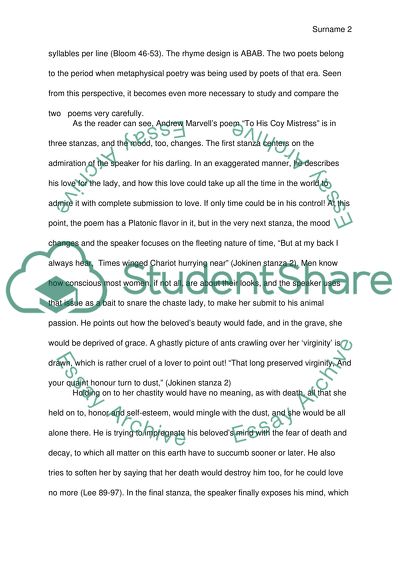Cite this document
(“To His Coy Mistress by Andrew Marvell and the Flea by John Donne Research Paper”, n.d.)
To His Coy Mistress by Andrew Marvell and the Flea by John Donne Research Paper. Retrieved from https://studentshare.org/literature/1473713-to-his-coy-mistress-the-flea
To His Coy Mistress by Andrew Marvell and the Flea by John Donne Research Paper. Retrieved from https://studentshare.org/literature/1473713-to-his-coy-mistress-the-flea
(To His Coy Mistress by Andrew Marvell and the Flea by John Donne Research Paper)
To His Coy Mistress by Andrew Marvell and the Flea by John Donne Research Paper. https://studentshare.org/literature/1473713-to-his-coy-mistress-the-flea.
To His Coy Mistress by Andrew Marvell and the Flea by John Donne Research Paper. https://studentshare.org/literature/1473713-to-his-coy-mistress-the-flea.
“To His Coy Mistress by Andrew Marvell and the Flea by John Donne Research Paper”, n.d. https://studentshare.org/literature/1473713-to-his-coy-mistress-the-flea.


